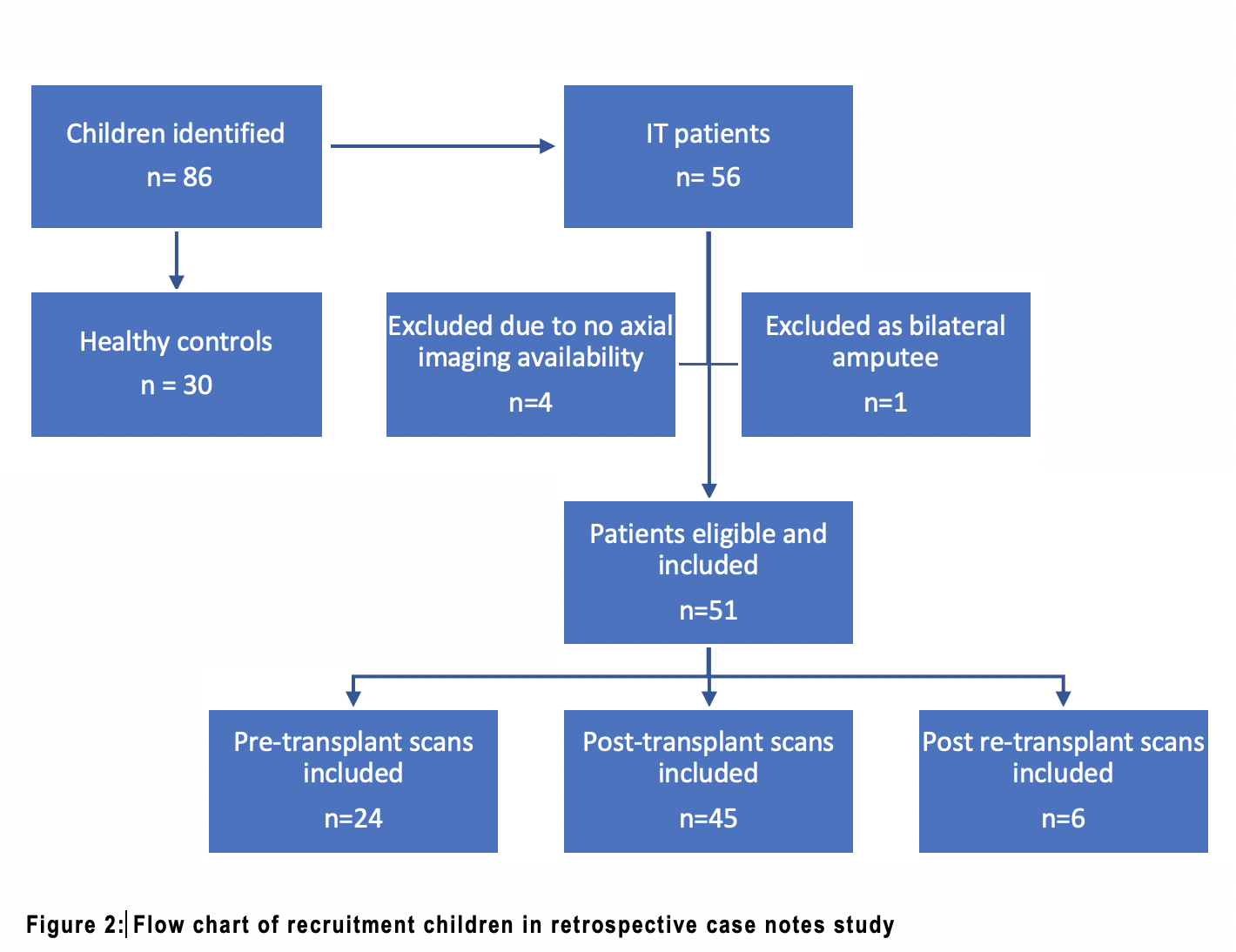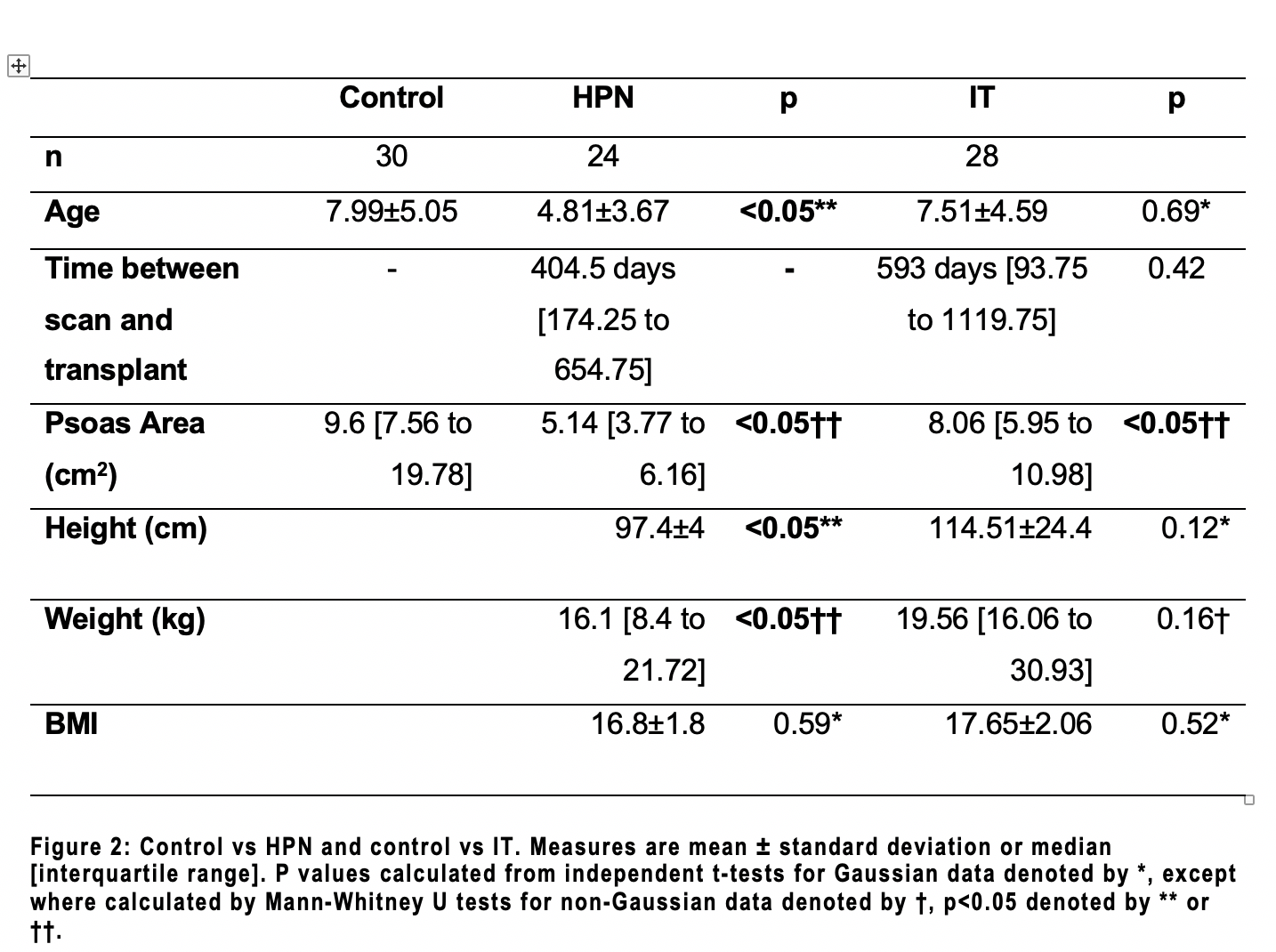Introduction
Sarcopenia or loss of lean muscle mass is associated with disease states and malnutrition. The effects of both are noted in intestinal failure, intestinal transplant, and adult liver transplantation outcomes. Psoas muscle cross sectional area (PCA) is a validated proxy marker of muscle mass. We look to characterise it in home parenteral nutrition (HPN) and intestinal transplant (IT) patients. Determinants of PCA were explored in IT patients.
Methods
This was a multi-centre, retrospective, case-notes based study. Existing axial imaging was analysed, pre- and/or post-transplant. Control images were from a trauma series of healthy children. The PCA was measured at L4 with the psoas muscle examined for ectopic fat content and perinephric fat presence, a validated marker of visceral adipose tissue. Univariate and linear regression analysis was used to identify factors associated with PCA.
Results
At total of 81 children were included in the study. 51 with intestinal failure or post-transplant (males=26) and 30 controls (males=22).

106 scans were analysed with 24 HPN (males=12) and 43 IT (males=23). See figure 2. In the HPN and IT groups after adjusting for sex, age and pubertal status, PCA was found to be significantly lower than controls; HPN having 1.51cm2 and IT patients having 1.13cm2 smaller PCA than controls (p< 0.05). In the total intestinal rehabilitation (HPN and IT) group, after adjusting for sex, age and pubertal status, PCA was 1.66cm2 larger in the IT group than those on HPN (p< 0.05). Length of stay in intensive care was a negative predictor of PCA. There was a trend toward lower PCA in patients that had died. IT had significantly more psoas fat than controls (p< 0.05) and demonstrated presence of peri-nephric fat on more occasions than controls (p< 0.05).

Conclusion
IT is associated with greater muscle mass when compared to HPN. This suggests improved nutritional status after transplantation. Adiposity was found to be aberrant in IT patients. PCA is a novel biomarker of nutritional status and may be developed further in intestinal rehabilitation.
.jpg )